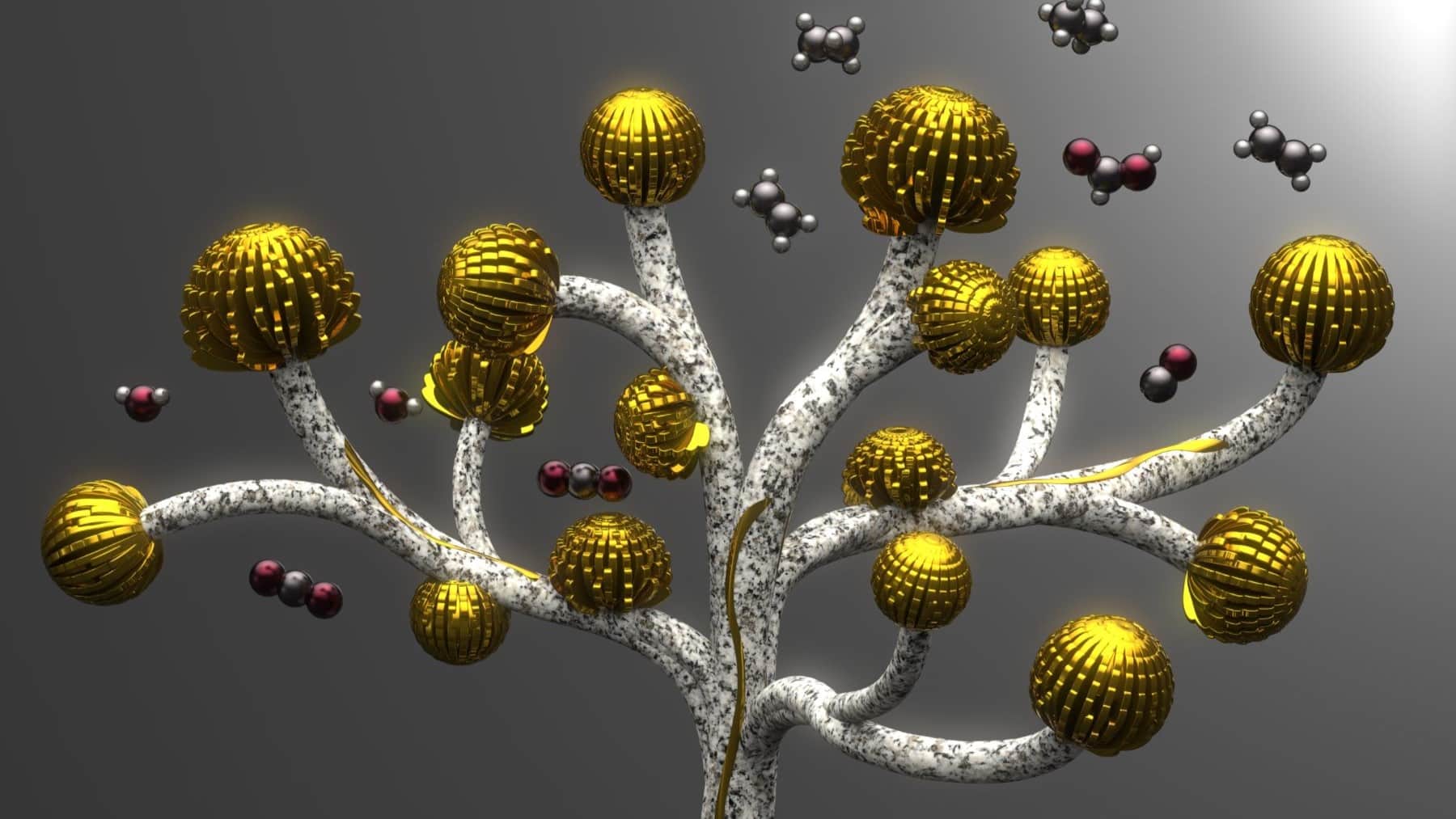The time passes and environmental damage is getting worse, for example on these islands. This has led to the search for sustainable technologies, but now there has been a great invention, they are nanoflores with copper petals that promise to stimulate green mobility, but how is this possible?
A large increase in demand for energy consumption
The energy demand has increased with great jumps and unfortunately, but unfortunately this increase has major consequences in the economy and in our environment.
More energy means more money and, unfortunately, more damage to the planet with the help of energy that is not friendly.


In this context and looking for solutions, researchers from the Cambridge University and the California University, Berkeley They came up with a great way to produce fuels and environmentally friendly chemicals.
A revolutionary invention
It’s a great invention, small Copper Nanofloreswho adhere to an artificial leaf and carbon dioxide into complex hydrocarbons, with only solar energy.
Unfortunately, most of our hydrocarbons today come from fossil fuels, which generates polluting emissions.
But now researchers from Cambridge and Berkeley have arrived to solve the problem that produces fuels and chemicals from CO2, water and glycerol, but without polluting emissions!
Nanoflores making photosynthesis
Like plants, these flowers Convert CO2 and Water into EthanolA clean and renewable fuel, due to an “artificial photosynthesis” isn’t great?
An artificial membrane that imitates leaves makes this process possible. Cover with small copper flowers, this membrane catches sunlight and with that energy, transforms carbon dioxide and water into ethanol.
Enormous energy costs
However, the production of complex hydrocarbons requires a considerable amount of energy. To overcome this obstacle, scientists integrated electrodes composed of silicon nanohilos who can oxidize glycerol instead of water, improving the effectiveness of the procedure
Thanks to this ingenious design, the generation of hydrocarbons has increased 200 times compared to the old transformation techniques based on water and CO2.
In addition to improving CO₂ reduction, this process produces valuable substances such as glyceration, lactate and derivatives, applicable in medicine, beauty products and industry
On the other hand, Glycerol, which is normally considered a residue, plays a key role in improving the speed of the reaction. Another surprising point is that when carefully designing the surface of the Nanoflores, which functions as a catalyst, the researchers managed to control the selection of generated products.
Andrei, researcher at St. John’s College de Cambridge, stated the following:
“This shows that we can apply our platform to a wide range of chemical processes outside the purely waste conversion. When we carefully design the catalyst surface, we can influence the products that we generate, making the process more selective ”.
Great expectations for the future
Although the current selection of CO₂ cabbage water substances is maintained around 10 %, researchers are optimistic about the possibility of improving the design to increase efficiency.
The equipment is planning to apply its invention to even more complex organic reactions, so that doors are opened for sustainable chemical production.
“This project is an excellent example of how worldwide research collaborations can generate scientific progress of great impact” “by combining the experience of Cambridge and Berkeley, we have developed a system that can change the way we produce fuels and chemicals in a sustainable way in a sustainable way “ Andrei said.
In conclusion, this incredible discovery of copper nanoflores can contribute to the promotion of green mobility, as well as this train that does not use liquid fuel. These claims reduce dependence on fossil fuels and promote the use of beautiful renewable energy sources.

